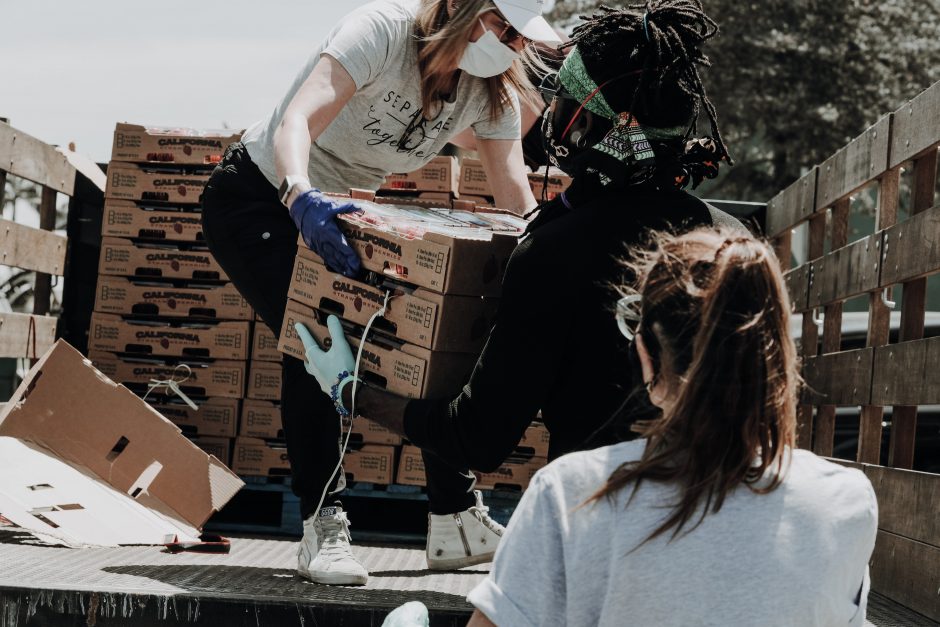Originally published in The Corruption Issue – The Disease That Keeps Growing by Utblick Magazine
Money laundering, illicit financial flows, fictitious invoices, nepotism, embezzlement, fraud and extortion, these acts are some of the most common practices that humanitarian organisations must overcome to continue their operations.
Humanitarian assistance is mostly provided in developing countries that often suffer from high levels of corruption. It is often a great challenge, understanding whether the planned aid is actually being allocated to its designated group, which can range from women, children to minority groups and those who are financially weak. Corruption in these contexts is a disastrous outcome, but corruption is also a phenomenon that affects all countries. No country is immune to this disease, no matter the level of economic or social development. However, the forms and intensity of corruption can differ from state to state, as in some societies, the tolerance level and attitude towards corruption differs. Looking at the statistics of Transparency International it is nothing but a fact that corruption does exist in all countries.
However, the nature and complexity of corruption is often underestimated by the public, as it is multi-layered and complex to deal with. As Albert Einstein famously put it: “In theory, theory and practice are the same. In practice, they are not.” A perfect description of the challenge that corruption poses for humanitarian operation, where proving and persecuting corruption is often rigid.
Non-governmental organizations (NGOs) and International non-governmental organizations (INGOs) often find themselves in difficult situations while operating in corrupt environments. In order to achieve both operational efficiency and accountability to their stakeholders, NGOs/INGOs have to tackle corruption, but doing so often causes them to either halt their projects or freeze them for unspecified periods of time. A form of corruption that NGO/INGOs often face is bribery, e.g. when transporting crucial supplies to an affected area, they often run a risk of border guards demanding some type of payment (bribe) in exchange for leaving them alone. Other forms of corruption these organizations face are that during procurement of resources and services, suppliers might form cartels to limit their chances of receiving contracts. All of the above-mentioned, often put staff in moral dilemmas in which the ethical principles of humanitarian assistance, such as impartiality, are threatened.

When Transparency International was founded in 1990, a link between corruption and development had been discovered. Corruption proved to be a major obstacle to international development as well as to human rights, democracy and peacebuilding, which are at the core of NGOs/INGOs operations. Existing NGOs were driven towards adopting anti-corruption strategies. Since then, humanitarian organizations are regarded as the flag bearers of anti-corruption. Nevertheless, to combat corruption, NGOs/INGOs have incorporated an effective Corruption risk management, and other technical procedures to improve transparency and efficiency of procedures. For example, the Swedish International Development Cooperation Agency (SIDA), has implemented its own anti-corruption regulation in which they follow through on all levels of its organisation, guided by an absolute intolerance for any form of corruption or kickbacks. Furthermore Openaid, which is run by SIDA, includes information about all Swedish humanitarian agencies handling funds and is built on open government data. This data shows when, to who and for what purpose Swedish aid has been disbursed as well as what results have been achieved.
It is important to point out that humanitarian organizations are not always successful in their battle against corruption. Many do not understand the real scope and character of corruption within humanitarian operations; instead it is treated as if it is a different area of focus, rather than viewing it as an inherent obstacle in humanitarian operations. Consequently, neglecting to integrate corruption risk management in humanitarian projects. In other words, corruption is not treated as relevant for the active humanitarian operations, instead the main focus is to provide for the most vulnerable. However, many INGOs/ NGOs including SIDA, with years of experience in the development sector, are treating corruption as a systematic behaviour and as a question of power. By shifting the traditional way of managing corruption as a legal and technical mechanism that can only be tackled by the enforcement of rule of law. This does not imply that law enforcement is not important however, more emphasis must be made on preventing and reducing the opportunities for corrupt acts to incur and to change the incentive structure.
The battle against corruption is yet to be won, and as the world is coping with an increasing risk of new civil wars, climate change challenges and consequences of a pandemic, the road to a less corrupt world remains to be built.

Turkan Ghafori
Writer for Utblick Magazine since 2020




